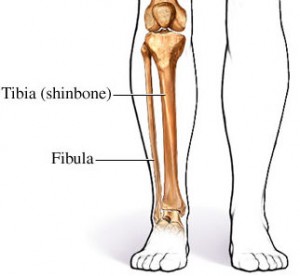 The human foot is extraordinary. When we became bipedal creatures our feet took on a profound new role. The feet with their three arches are a big part of the complex dance of upright posture. Successful upright posture requires keeping the feet as close to parallel as possible.
The human foot is extraordinary. When we became bipedal creatures our feet took on a profound new role. The feet with their three arches are a big part of the complex dance of upright posture. Successful upright posture requires keeping the feet as close to parallel as possible.
The feet can be separated into two distinct halves, inside and outside. The inside of the foot is the weight bearing portion while the outside is more about propulsion. If you look at a skeleton you will see that the big bone of the shin, the tibia, is situated directly under the big bone of the thigh, the femur. The smaller bone of the shin is the fibula and it stops below and to the outside of the femur of the upper leg. This means that weight transferred through the tibia will translate up the whole body to the crown of the head while weight transferred through the fibula will stop below the knee.
Practicing yoga with parallel or close to parallel feet is of the utmost importance unless otherwise instructed. Parallel feet allow for the most successful weight transfer through the bones of the body.
I’ll focus on urdhva danurasana, wheel pose, in these backbending posts. When I stand at the front of the yoga room and instruct people to go up into wheel I am always looking at the feet. What do they do on the initial lift into the pose? If they stay firmly grounded on both the inside and the outside of the foot I have no complaints. But the second I see the feet turn open or roll to the outside of the foot I am worried for their back.
If the feet stay grounded it is much more likely that the bones will remain aligned and weight can transfer successfully up into the pelvis and spine. The top of the leg wants to basically screw into the hip socket as you go up into wheel. If you fall to the outside of the feet or let them turn out you will be rotating the head of the femur in the opposite direction.
Grounded parallel feet give you the best opportunity to backbend successfully.
Do you know what your feet do? It took me a long time to realize that very often people have no idea what their bodies are doing while they practice. I finally discovered that instructing people not to move their feet verbally was not enough. I would say it over and over and watch the same individual move their feet every time that they went up into the pose. I would eventually ask, “Do you know that your feet fly out to the side each time you go up?” I received enough, “really?” as an answer to figure out that we are often doing things without knowing that we are doing them.
When it comes to backbends especially, it is good to know what your body is doing.
***
